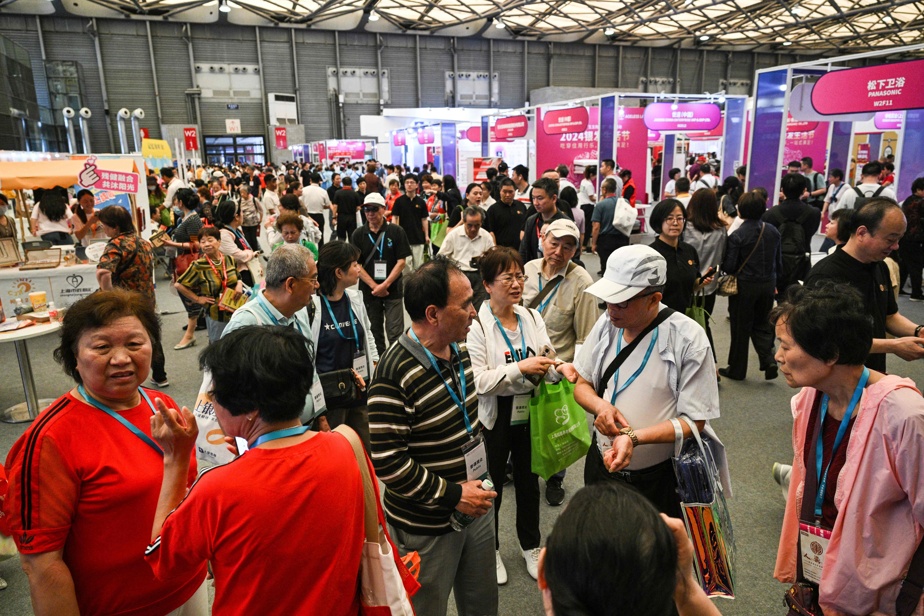(Shanghai) Monitoring the quality of sleep via the internet, grabbing an object using robotic arms or automatically counting the calories on your plate: in China where the population is aging, technology is giving the elderly a helping hand.
This week, hundreds of retirees flocked to a Shanghai fair entirely dedicated to them, marveling at the inventions meant to make their daily lives easier.
In 2022, China had some 215 million people aged over 65 out of a population of 1.4 billion, according to official figures.
China’s population has been in decline since 2020, after growing steadily for 60 years, raising fears of a sharp decline in the working population and increased pressure on its healthcare system as the country has more and more elderly people .
As families generally have only one child, it is difficult to rely solely on him to take care of his elderly parents. The exhibitors at the show have understood this well and are proposing that technology comes as a complement.
At 64, Mr. Yu is one of the visitors to the show. Among the crowd, he watches a company demonstrate an automated stair-climbing chair and devices to move a person from a bed to a wheelchair.
“Nowadays, there are fewer and fewer young people and more and more old people, so these smart products can provide better services to the elderly,” he says, impressed.
He himself says he has already purchased smart chairs and beds for older members of his family, including a 90-year-old relative he cares for.
At another booth, Shenzhen-based Innopro promises families high-tech, constant monitoring of their elders, via smartwatches, motion sensors and temperature-measuring devices.
Among its clients: nursing homes and local governments.
“For institutions, the hope is to save on labor costs, because we have to do checks (of each resident) every evening,” Jin Guohui, an employee of Innopro, explains to AFP.
“With this device, we reduce their work,” he says, showing a small white box equipped with a SIM card, which measures everyone’s vital signs and habits.
At another company, Eihoo Health Management, which manages canteens for the elderly, it is the meal plate that comes with a chip, allowing the food served on it to be identified.
When paying, a device reads the information from the chip and provides a complete nutritional report with the number of calories and the distribution of proteins, carbohydrates and lipids, making it easier to monitor your health.
Regular canteen patrons can set up payment cards that monitor their weight, nutritional habits and health data.
At the Shanghai Jiao Tong University student kiosk, the gadget on display is a robotic arm that helps those with reduced mobility accomplish everyday tasks like eating or turning doorknobs.
This use of technology is a real revolution in traditional Chinese culture, which requires family members to take care of their elders at home.
There are “clearly differences” between older people in China today and previous generations, recognizes Shi Wenjun, 73, who came to visit the show.
“We are all parents with only one child”, and “our children are almost 50 years old, they have their jobs, their families, so when we are older, we will choose the elderly care structures offered by the government “, she assures AFP.
“If older people can use smart technology, they won’t bother others,” she adds.
Shi Wenjun, who volunteers for activities for the elderly in her neighborhood, said she has converted to most new technologies, especially smartphones.
“But for many things, we are still in the learning phase,” she admits.




